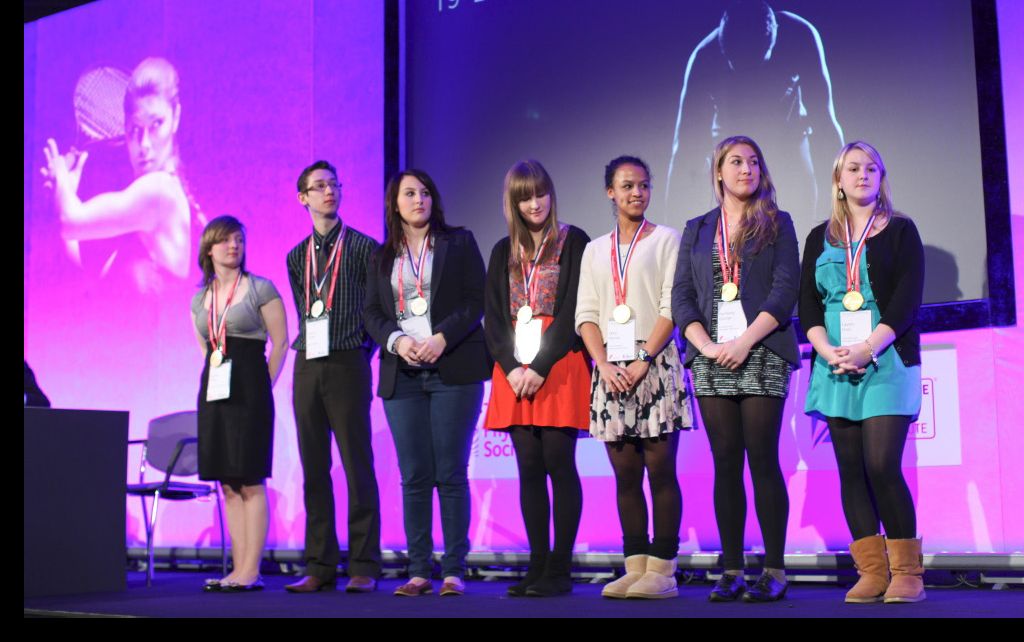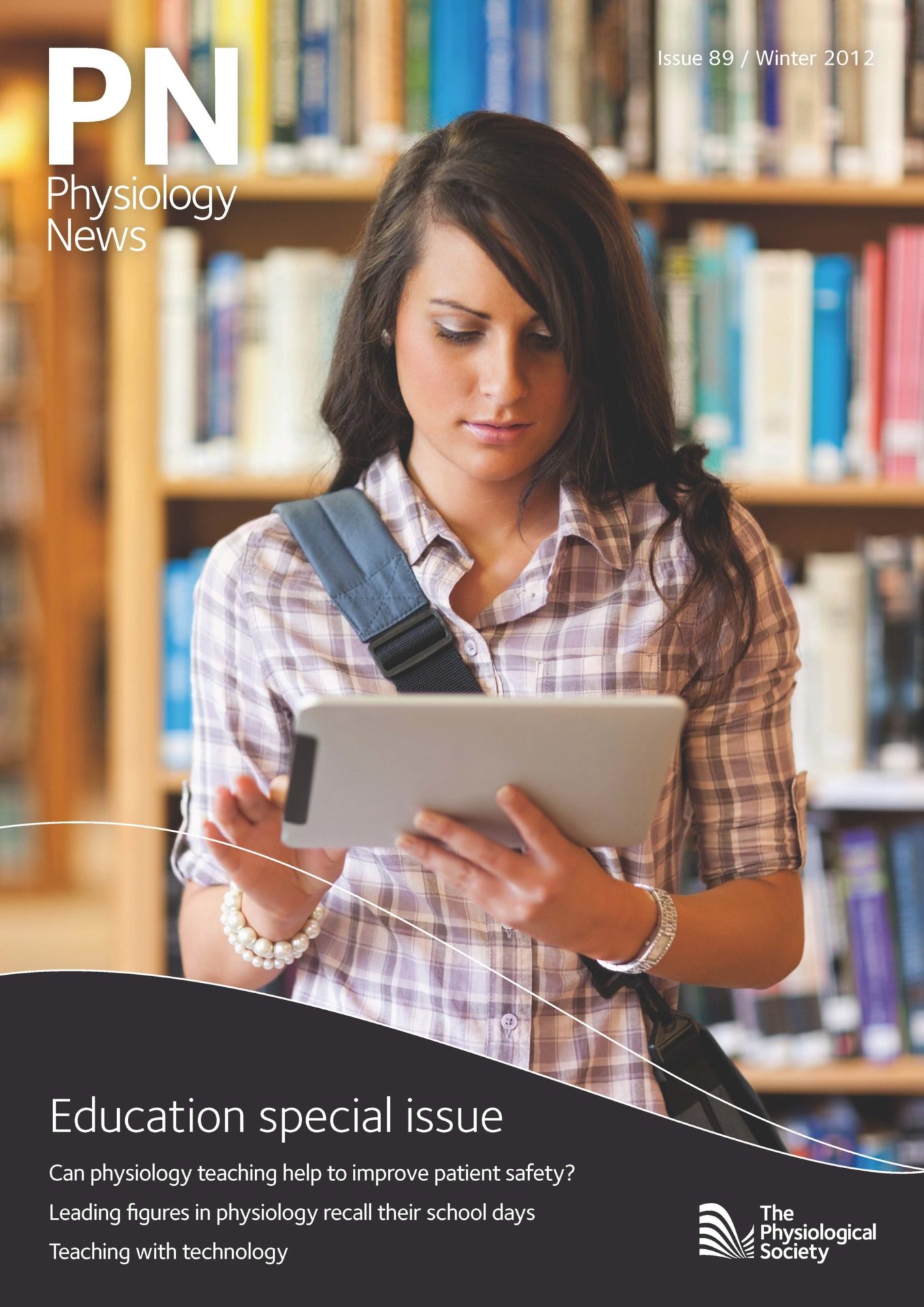
Physiology News Magazine
How to Win Gold competition: Winners’ report
News and Views
How to Win Gold competition: Winners’ report
News and Views
https://doi.org/10.36866/pn.89.12

The largest competition ever run by The Physiological Society challenged A-level students to direct their own sports physiology research project, which included 30 hours of research with progress reports. Students were provided with access to scientific mentors for support and those shortlisted were invited to present a poster of their work at The Society’s scientific meeting, The Biomedical Basis of Elite Performance, in London in March 2012.
The judges were very impressed by the quality of the student’s ideas. The gold prize was a Train Like a Champion Day at an English Institute of Sport High Performance Centre, which was awarded to a team from Northgate High School in Suffolk for their project, ‘The effect of video imagery on sports performance.’ The team also won a school prize of a visit from the Science Junkies with their London 2012-inspired In the Zone live show.
Teacher’s report
Julie Davey
In October 2011 I was forwarded an email advertising the How to Win Gold competition. I was immediately grabbed by the task the students were asked to do as well as the amazing prizes. It seemed like a challenging but achievable project that would be great for the students’ personal and academic development.
Initially it was difficult guiding the students towards realistic ideas for projects. They were full of inspiration but unfortunately we didn’t have the equipment, budget or ethical clearance to carry out many of their proposed experiments! The support from the organisers and the mentoring by academics was extremely helpful. The mentor for one group even came to visit them twice to check on their progress and then gave invaluable feedback. From a personal point of view, it was nice to feel connected to real investigative science again in contrast to the classic, predictable experiments which typically take place in the classroom.
All four groups worked hard and were rewarded by attending the final in London. This meant further research for the students, leading to production of their conference posters. I was extremely impressed with the quality of the finished posters; they certainly didn’t look out of place at the conference. The students began the day feeling very nervous at the prospect of discussing their studies with the academics in attendance. It was great to see many of the scientists taking the time to meet and talk with our students. It was incredible to see them growing in confidence and speaking really passionately about their research. I was very proud of them all. The day was topped off for the students when Sir Alan Sugar’s car had to stop to let them across a zebra crossing outside the conference centre as we left!
Being part of the competition took a lot of effort but was very rewarding. It was great to see students of all abilities getting a true sense of what scientific investigation is really all about. They developed skills to work both collaboratively and independently enabling them to communicate their research to leading academics. I hope The Society will continue to give students these unique opportunities that open their eyes to the real world of science.
Students’ report
Team 3 Directions
All of the members in our group enjoy studying Biology and Chemistry at A-level, so entering the competition was a great way to expand our skills. The first thing to do was generate a unique idea for our project. We knew that elite athletes like Andy Murray use positive music for inspiration and decided to see whether positive video imagery would also enhance performance.
For the experiment, we either showed a clip of positive sporting images combined with powerful, upbeat music or a video of Paula Radcliffe pulling out of the Athens Olympic marathon combined with depressing music. The students were then asked to run 800 m. Although we didn’t find a significant effect on heart rate or running times, we did notice that vigour was affected. The students’ perception was that they weren’t working as hard when they had watched the positive images. This could have a positive effect on ordinary peoples’ attitude to doing sport as well as elite performers.
Working with our mentor Sam Marcora, from the Centre for Sports Studies at the University of Kent at Medway, was really helpful as he shared theories and techniques used in sports physiology. Sam explained the importance of trial randomisation, introduced us to the Brunel Mood Scale and told us how to calculate reliability, which was a great way of furthering our knowledge on carrying out experiments. The competition enabled us to talk to top academics in the field of sports physiology and develop our understanding in the science behind the sport. We learnt how to create an academically high-quality poster on our chosen experiment which has been brilliant in giving us a taster of university work.
When it came down to the final in London we were grilled by top physiology academics, which was very challenging to say the least! But we were pleased that the people who came and asked us about our project seemed interested. It goes to show hard work pays off, especially with such a good outcome!
Entering the competition has confirmed our aspirations of a future in the field of science. We all want to go to university and study science-based courses: medicine, nursing, biology and natural sciences.
We would like to thank our teacher Julie Davey for introducing us to the competition as well as our mentor Sam Marcora for his contributions.
